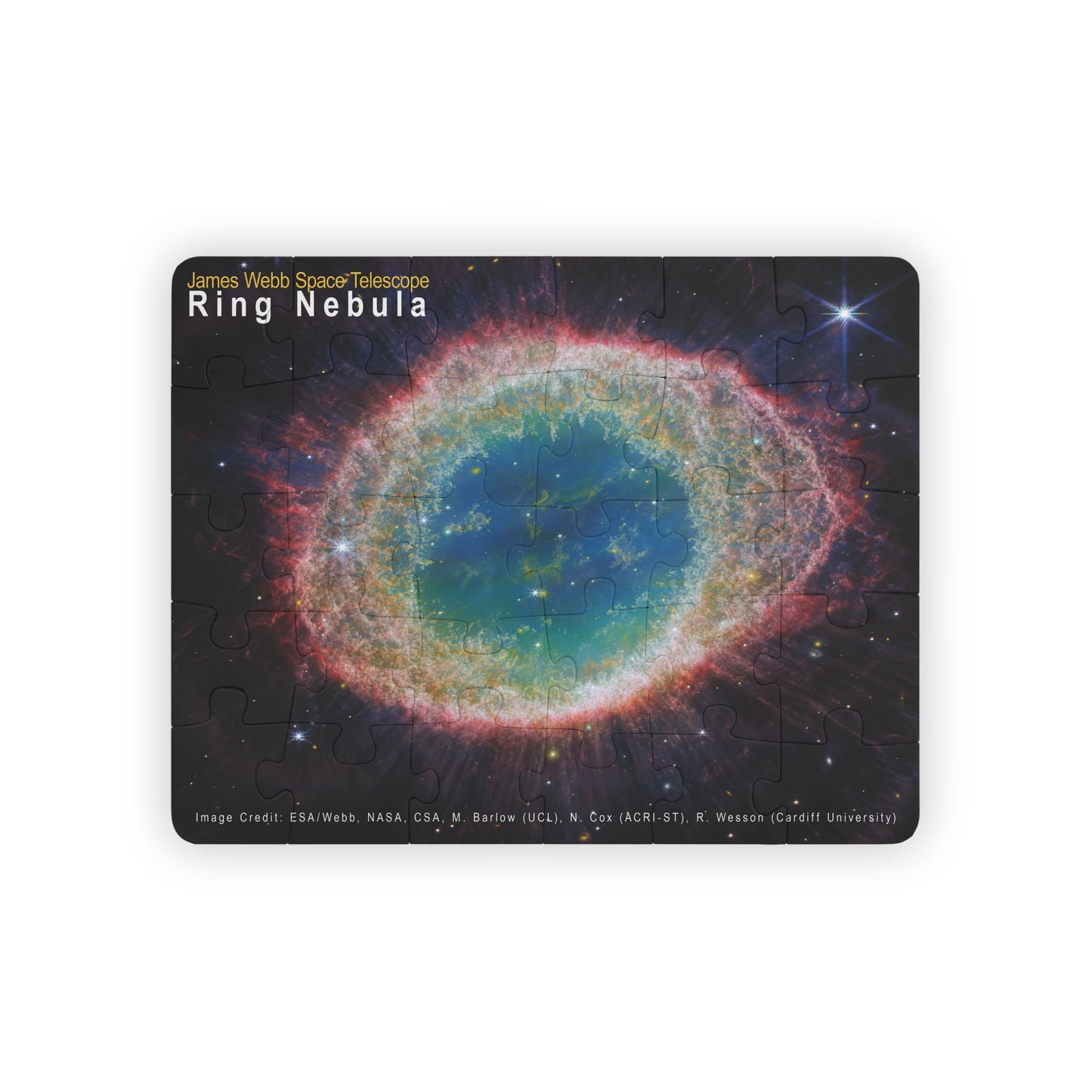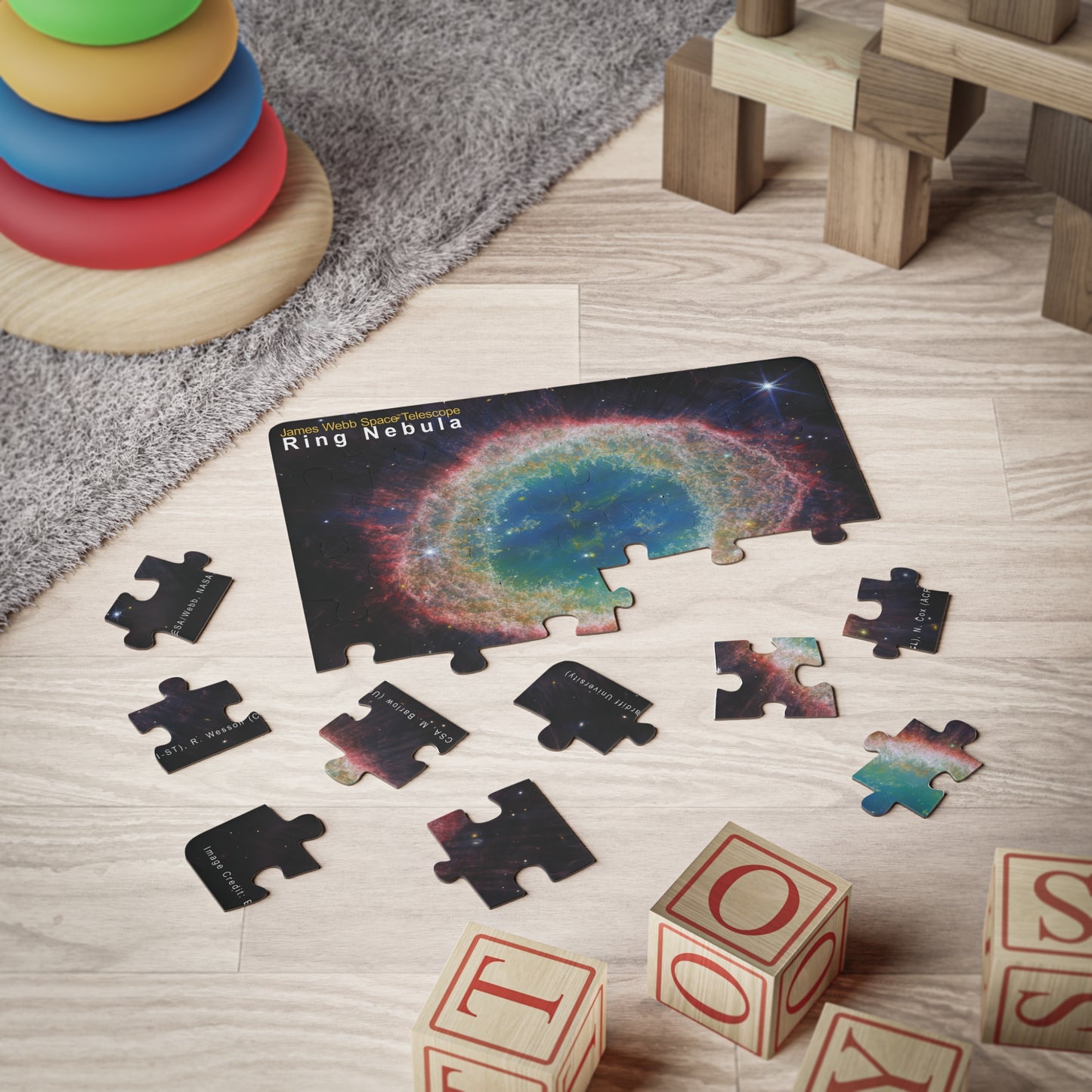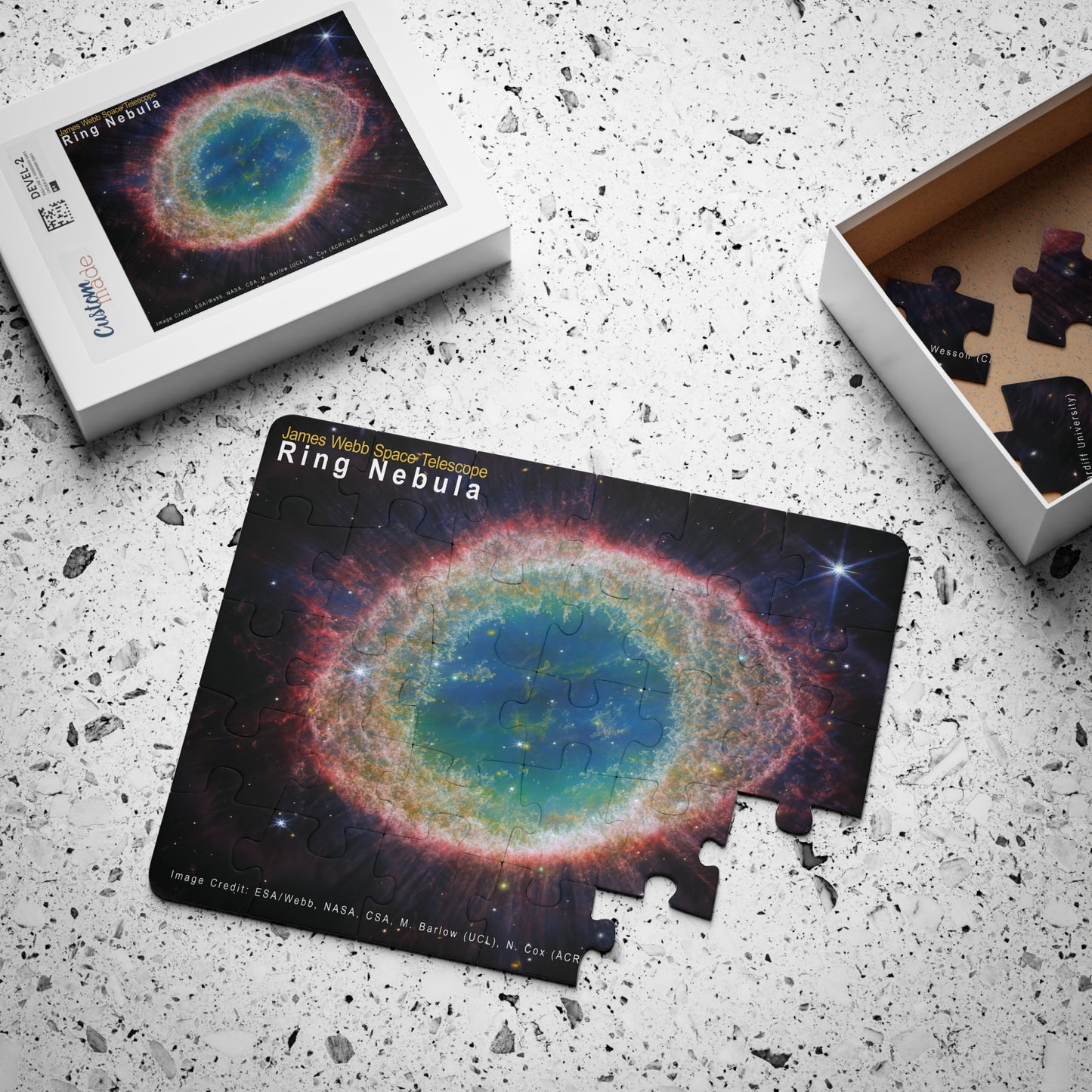Ring Nebula, Kids' Puzzle
Ring Nebula, Kids' Puzzle
Couldn't load pickup availability
Blast off into learning and fun with our Galaxy Puzzles!
Puzzles are an all-time favorite activity, and with your custom ideas, you can help youngsters have quality time by solving their own personalized kids' puzzle. Each puzzle is available in a toddler-friendly 30-piece pack featuring large pieces and rounded corners for added safety and peace of mind for parents. Each puzzle is made from chipboard and includes a reference photo to aid in solving the problem.
Material: laminated chipboard
One size: 30-piece puzzle - 14" x 11" (35.6 x 28cm)
Rounded corners
Comes in a box with a reference photo
Ring Nebula:
NASA’s James Webb Space Telescope has observed the well-known Ring Nebula in unprecedented detail. Formed by a star throwing off its outer layers as it runs out of fuel, the Ring Nebula is an archetypal planetary nebula. Also known as M57 and NGC 6720, it is relatively close to Earth at roughly 2,500 light-years away.
This new image from Webb’s NIRCam (Near-Infrared Camera) provides unprecedented spatial resolution and spectral sensitivity. For example, the intricate details of the filament structure of the inner ring are particularly visible in this dataset.
There are some 20,000 dense globules in the nebula, which are rich in molecular hydrogen. In contrast, the inner region shows very hot gas. The main shell contains a thin ring of enhanced emission from carbon-based molecules known as polycyclic aromatic hydrocarbons (PAHs). Roughly ten concentric arcs are located just beyond the outer edge of the main ring. The arcs are thought to originate from the interaction of the central star with a low-mass companion orbiting at a distance comparable to that between the Earth and Pluto. In this way, nebulae like the Ring Nebula reveal a kind of astronomical archaeology, as astronomers study the nebula to learn about the star that created it.
Constellation: Lyra
Dimensions: 2.14 x 2.17 arcminutes
Distance: 2,300 light-years
Exposure Dates: 4 August 2022
Image Credit: ESA/Webb, NASA, CSA, M. Barlow (UCL), N. Cox (ACRI-ST), R. Wesson (Cardiff University)
Share






